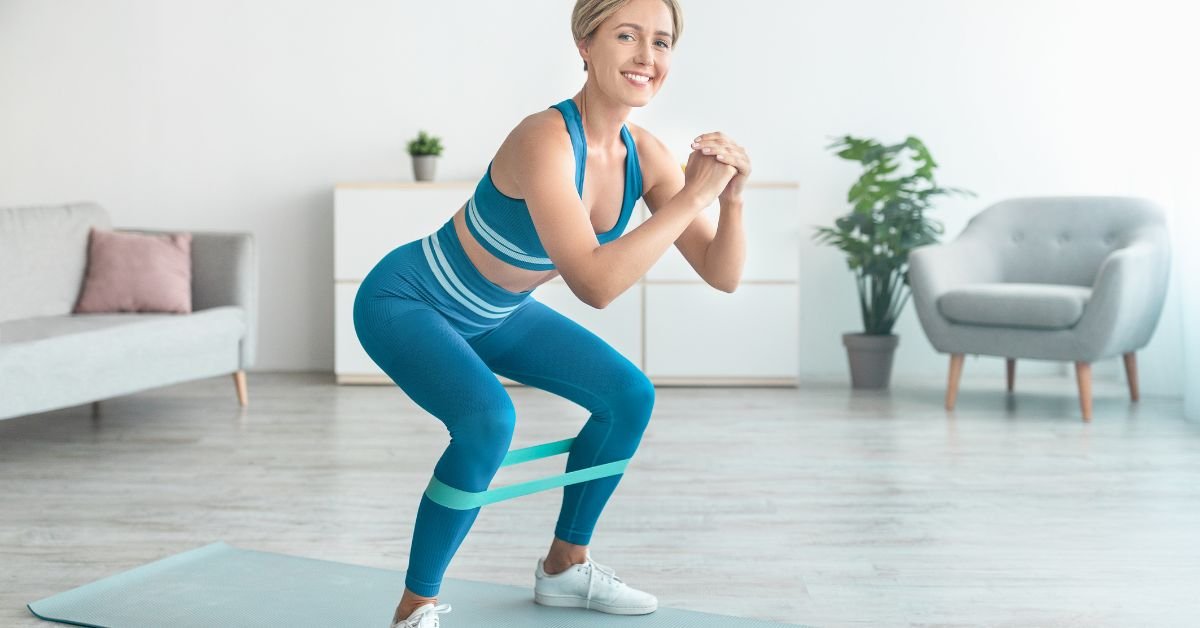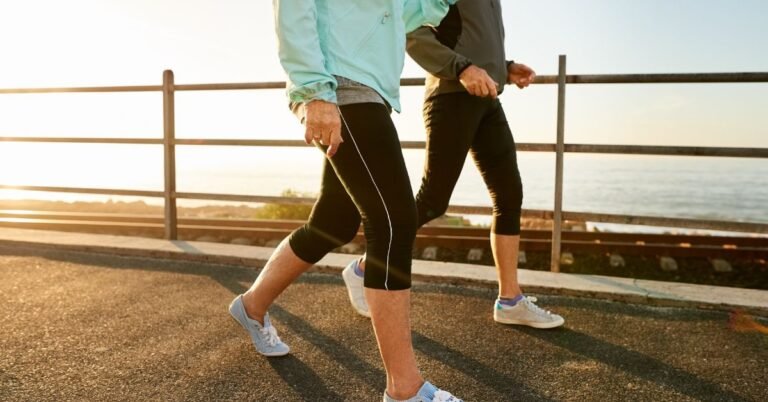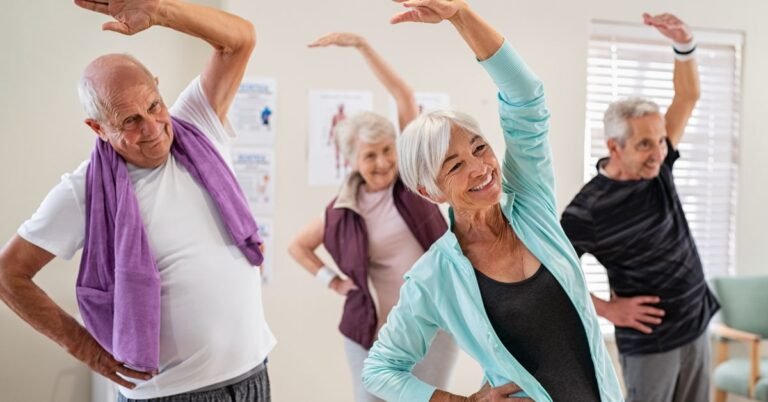Table of contents:
Why is hip strengthening important?
Hip strengthening exercises are an excellent way to support the hip joint, one of the most important weight-bearing joints of the body. Located between the pelvis and femur, the hip joint bears the weight of the upper body and is essential for stability and balance to support various movements. Walking alone puts forces up to three times your body weight through the hip joint with each step.
The hip joint is the second most commonly affected joint in osteoarthritis which can be associated with significant pain, discomfort and reduced quality of life. Hip fractures are also unfortunately incredibly common among older adults; the incidence roughly doubles for every decade over 50 and they are much more prevalent in Caucasian populations and women. This is due to the higher rates of low bone mineral density and osteoporosis. Hip fractures can have serious and life threatening consequences.
Gaining and maintaining strength in the hips is therefore essential, throughout life as well as into those senior years. Strength training exercises focused on the hip joint and the multiple muscles of the hip can effectively build and maintain muscle strength, mass and bone density. A range of exercises are required to ensure all muscle groups of the hip are targeted, as well as exercises to maintain stability and flexibility.
To help you with this, we have put together this list of our top hip strengthening exercises for seniors. They target the main muscle groups around the hip joint, to help you build strength in the hips, reduce pain in the area, increase flexibility, make movement easier and improve your balance. Try out some of the hip strengthening exercises below and let us know in the comments how they work for you!
Warm up
Start with a light warmup:
- March on the spot for 30 seconds
- 30 seconds sidestepping or side lunging
Hip mobility exercises
Hip circles
- Stand on your right leg with your left leg lifted, holding onto a stable object for support if required
- Move your left leg in circles with a bent knee
- Do 10 circles in each direction
- Then do the right leg
Hip marching
- Sit upright on a chair, holding onto the sides of the chair for support if you need
- Lift one leg with your knee bent as far as is comfortable. Place your foot down slowly with control
- Repeat with the opposite leg
- Do 10 lifts with each leg, and repeat 3 times
Knee hugs
- Lie on the back, extending both legs flat along the floor
- Keeping the left leg straight, pull the right knee up toward the chest
- Place both hands on top of the knee to help pull it in toward the chest
- Hold the stretch for 10 seconds
- Let go of the knee and gently lower the leg back toward the floor
Hip strengthening exercises
Standing hip extension
- Stand with your legs shoulder width apart and hold onto a table or chair in front of you for support
- Perform an abdominal draw by pulling your belly in towards your back
- Keep your knee straight and toes pointed forwards, and kick your leg backward slowly
- Keep your upper body and back straight during the exercise
- Return to the starting position
- Repeat 10-15 times, 3 times in a row
- Repeat with the opposite leg
Once this is easy, add in a resistance band between your ankles to add some resistance into the exercise.
Standing lateral hip raises
- Using a chair for balance, stand with the belly tucked in and the rips up
- Lift one leg out to the side as high as is comfortable for you, keep the knee straight and toe pointed forwards
- Lower the leg back down to the starting position
- Repeat 10 times on each leg
Once this is easy, add in a resistance band between your ankles to add some resistance into the exercise.
Glute bridge
- Lie on the floor or a bed flat on your back
- Bend your knees so they are pointing upwards, and keep your feet flat on the floor about hip distance apart
- Lift your hips by squeezing your buttocks and pushing through the heels
- Lower down slowly
- Repeat 10 times, for 3 sets
Straight leg raise
- Lie on the floor or bed fiat on your back
- Pull your toes back towards you, fully extend your knees by squeezing your quad muscles. Keep this squeeze throughout
- Slowly lift one leg in the air, keeping the knee fully extended then slowly lower it back down
- The aim here isn’t lifting very high, but controlling the movement
- Repeat 10-12 times on each leg for 3 sets
You can make this harder by adding a resistance band between your ankles
Partial squats
- Stand, using a chair to support yourself if required
- Bend your knees as far as is comfortable without pain, pushing your bottom behind you and keeping your chest lifted forwards
- Try not to let your knees collapse inwards, think about pushing them out to the side throughout the movement
- Return to standing position
- Repeat 10 times, for 3 sets
You can make this harder by performing a squat holding a weight (any household object will do if you don’t have any weights)
Standing lunges
- Stand with one leg a stride length in front of the other, keeping the feet about shoulder width apart, feet pointing forwards
- Keeping your upper body vertical, slowly bend both your knees allowing your back heel to lift off the ground
- Aim for the line of your trunk to go straight down, rather than forwards
- The lower you go, the harder the exercise is – you can use this as something to build up to
- Push back to the starting position by straightening both legs
- Repeat 8-10 times on each leg, for 3 sets
Hip hinge (deadlift)
- Stand with your feet hip distance apart and a light weight in your hands (a bottle of water for example held by both hands with straight arms in front of your pelvis)
- The aim of the movement is to hinge at your hips, lowering the weight down towards the ground, keeping it close to your legs
- You want to keep a straight back throughout, keeping your shoulder blades squeezed together and your arms straight
- Keep a small knee bend whilst pushing your hips back. The main movement should come from pushing your hips back and leaning your trunk forwards
- Lower the weight down your legs until you feel a stretch down the back of your legs. How far you lower will partly depend on hamstring flexibility. A good area to aim for initially would be around your knees or mid shins
- To bring the weight back up, straighten at the hips and knees to stand tall
- Repeat 8-10 times, for 3 sets
Maintaining strong & healthy hips
We hope that you found the above list of senior friendly hip strengthening exercises useful, and add these into your weekly exercise routine. We would recommend performing strengthening exercises at least twice a week to maintain or build muscle and bone strength. It’s possible to gain muscle at any age, so it’s never too late to begin!
It doesn’t stop there – as well as strengthening exercises, there are some additional measures that you can take to maintain strong and healthy hips.
Start by keeping your weight in a healthy range. If you are experiencing pain from hip osteoarthritis, the amount of weight you put on your hips is directly related to the amount of pain you experience. If you’re overweight, losing a few pounds would provide some welcome pain relief and take a large amount of strain off the hips.
Eating a balanced, nutrient rich diet will help you control your weight, as well as provide you with the nutrients required to maintain strong and healthy hips. Stress is also known to exacerbate joint pain, so make sure you take steps to look after your mental health too. This might involve going for a walk outside once a day, which has numerous physical and mental health benefits.
Looking after your hips is extremely important, especially as an older adult which is when hip weakness, pain and problems are most likely to arise.
If you would like any more help or advice please let us know.
The guidance and advice in this article is generic – If any of these exercises are worsening your pain please try to modify them or don’t perform them. If you have a specific problem, pain, or injury that needs investigating please seek help from a relevant health professional.




